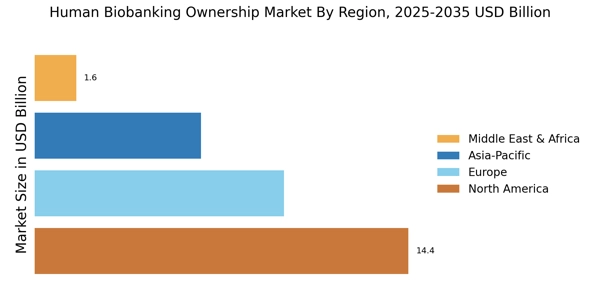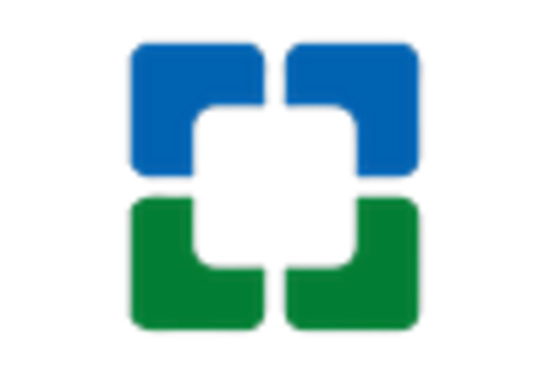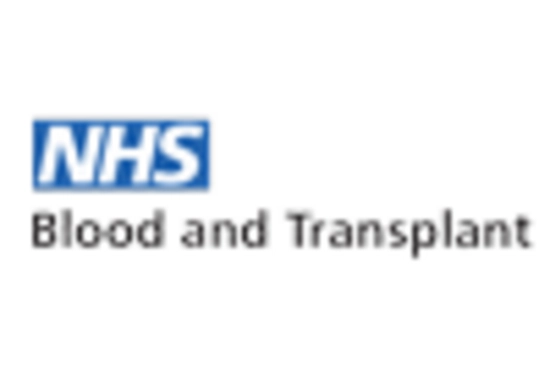Regulatory Support and Frameworks
The Human Biobanking Ownership Market is benefiting from the establishment of supportive regulatory frameworks that promote ethical biobanking practices. Governments and regulatory bodies are increasingly recognizing the importance of biobanks in advancing medical research while ensuring the protection of donor rights. Initiatives aimed at standardizing biobanking practices and enhancing transparency are being implemented, which may lead to increased public trust in biobanking. For instance, the introduction of guidelines for informed consent and data privacy is likely to encourage more individuals to donate biological samples. This regulatory support could potentially expand the Human Biobanking Ownership Market by fostering a more robust and ethically sound biobanking environment.
Rising Demand for Personalized Medicine
The Human Biobanking Ownership Market is experiencing a notable surge in demand for personalized medicine. This trend is driven by advancements in genomics and biotechnology, which enable tailored treatment plans based on individual genetic profiles. As healthcare providers increasingly adopt precision medicine approaches, the need for biobanks that store diverse biological samples becomes critical. According to recent estimates, the personalized medicine market is projected to reach USD 2 trillion by 2030, indicating a substantial opportunity for biobanks to cater to this growing sector. The ability to access a wide array of samples enhances research capabilities, thereby fostering innovation in drug development and therapeutic strategies. Consequently, the Human Biobanking Ownership Market is likely to expand as stakeholders recognize the value of biobanks in supporting personalized healthcare initiatives.
Advancements in Research and Development
The Human Biobanking Ownership Market is significantly influenced by ongoing advancements in research and development across various fields, including pharmaceuticals, biotechnology, and clinical research. The increasing complexity of diseases necessitates the collection and analysis of diverse biological samples to understand disease mechanisms better. As research institutions and pharmaceutical companies invest heavily in R&D, the demand for biobanking services is expected to rise. Reports indicate that the global R&D spending in the pharmaceutical sector alone reached approximately USD 200 billion in 2023, underscoring the critical role of biobanks in facilitating innovative research. This trend suggests that the Human Biobanking Ownership Market will continue to thrive as it provides essential resources for cutting-edge scientific inquiries.
Growing Public Awareness and Participation
The Human Biobanking Ownership Market is witnessing a rise in public awareness regarding the importance of biobanks in advancing medical research. As individuals become more informed about the role of biobanks in developing new treatments and understanding diseases, there is a corresponding increase in participation rates for biobanking initiatives. Educational campaigns and outreach programs are effectively communicating the benefits of biobanking, which may lead to a larger pool of biological samples available for research. This trend suggests that the Human Biobanking Ownership Market could experience growth as more individuals choose to contribute their samples, thereby enhancing the diversity and richness of biobanks.
Integration of Artificial Intelligence and Big Data
The Human Biobanking Ownership Market is poised for transformation through the integration of artificial intelligence (AI) and big data analytics. These technologies enable researchers to analyze vast amounts of biological data efficiently, leading to more accurate insights and discoveries. The ability to process and interpret complex datasets enhances the value of biobanks, making them indispensable in modern research. As AI continues to evolve, its applications in biobanking are likely to expand, facilitating better sample management and data utilization. The market for AI in healthcare is projected to reach USD 36 billion by 2025, indicating a significant opportunity for the Human Biobanking Ownership Market to leverage these advancements for improved research outcomes.


















Leave a Comment